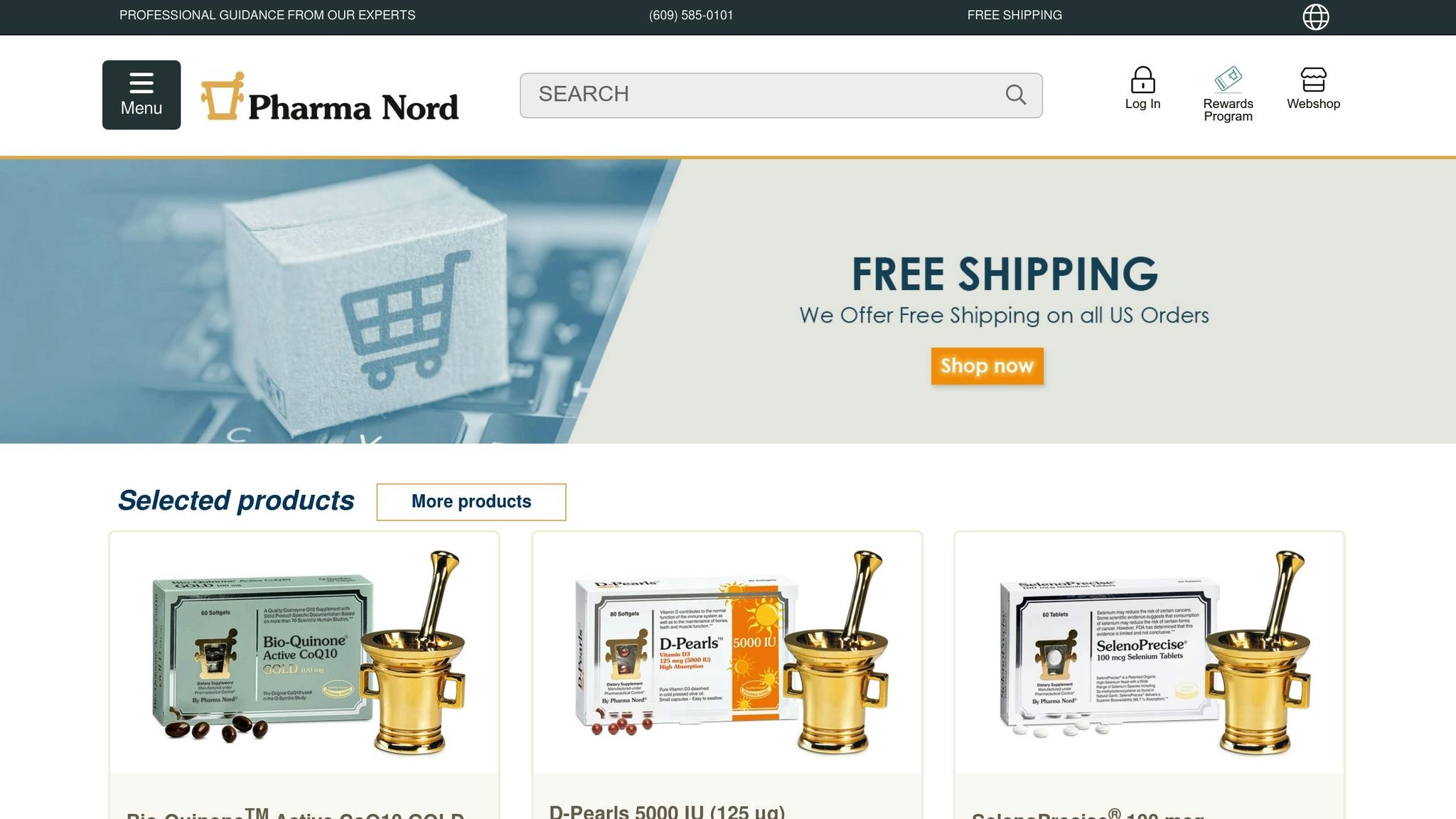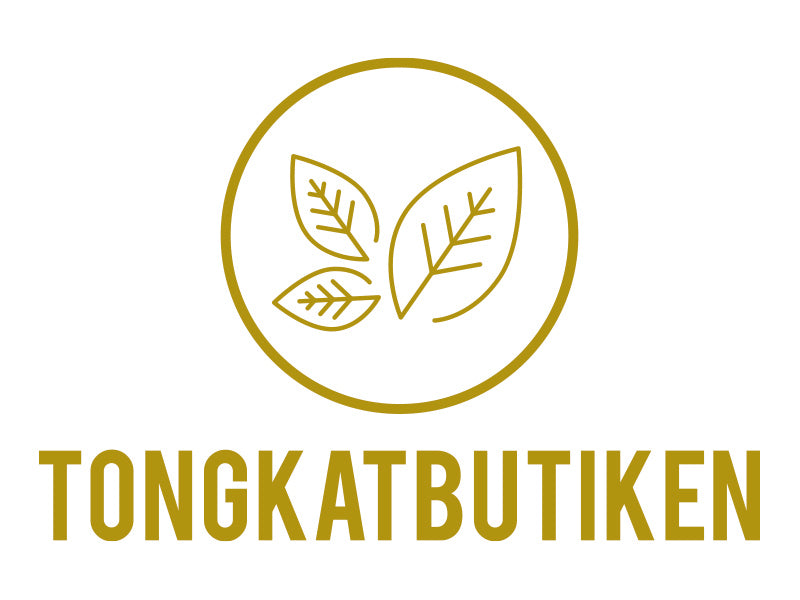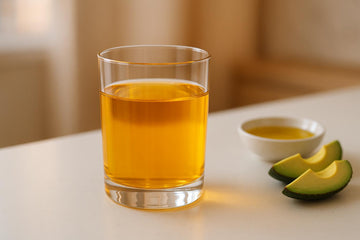CoQ10 is a fat -soluble nutrient that plays an important role in the body's energy production and acts as an antioxidant. To maximize its uptake and effect, it is crucial to understand how fat solubility affects absorption. Here are the most important points:
- Fat -solubility requires fat intake: CoQ10 is best taken up when combined with fat -rich foods such as avocado, olive oil or salmon.
- Formulation affects absorption: Oil -based soft gel capsules and liposomal variants provide better uptake than powder or tablets.
- Age and health plays a role: The body's production of CoQ10 decreases with age and in certain diseases, which makes supplements important to many.
- Statins can reduce CoQ10 levels: People who take statins may need a higher intake of CoQ10.
For best results, take CoQ10 with today's biggest meal and consider choosing high quality supplements with the right carrier oil. The absorption is individual, but the right dosage and timing can make a big difference.
The Secret Behind Coq10 Absorption | Pharma Nord

How CoQ10 absorption works
CoQ10's fat -soluble nature is crucial to how the body absorbs it. In order to understand how the uptake can be improved, it is important to know what happens when CoQ10 passes through the digestive system and what factors are played.
CoQ10's path through the body
When you take COQ10, it follows the same process as other fat -soluble substances. The absorption mechanism is reminiscent of that for vitamin e, which means that specific conditions are required to optimize the uptake.
CoQ10 must be emulsion and form micelles together with fat -rich components from the food. Here the pancreas secretion plays and bile a key role. The bile salts enclose the CoQ10 molecules and help create mixed michels that facilitate the uptake.
The absorption itself occurs through passive diffusion via the cell membrane phospholipids. For this to work, a carrier lipid is needed, which is usually a monoglyceride, which transports the COQ10 molecules through the cell membrane.
Once the COQ10 is absorbed in the intestinal cells, it is transported via the lymphatic system to the liver. There it is converted into Ubiquinol, which is the biologically active form of CoQ10. Several individual and technical factors then affect how effectively this process takes place.
Factors that affect bioavailability
How well the body can absorb COQ10 depends on several things. Only about 10 % of intake COQ10 is absorbed in the gastrointestinal tract, which depends on its low water solubility and high molecular weight.
Age is an important factor. The body's own production of CoQ10 is highest in their 20s and gradually decreases. To meet the body's needs, the daily need for CoQ10 is appreciated from both own production and food to approximately 500 mg.
A well -functioning digestive system is also crucial. Health conditions such as fibromyalgia, diabetes, cancer, heart failure and neurodegenerative diseases are linked to lower levels of COQ10 in the blood. These conditions can both reduce the body's own production and make it more difficult to absorb COQ10.
Statins can create additional problems. These drugs inhibit an intermediate product in the biochemical process that leads to CoQ10 production. Therefore, people who take statins often have a greater need for COQ10 supplements.
The formulation of the supplement also plays a major role. Kristallin Coq10 without crystal dissertation has up to 75 % lower bioavailability. Instead, high quality supplements contain the COQ10 dissolved in a carrier lipid, such as soy oil or palm oil, which improves the absorption.
After taking COQ10, plasma levels begin to rise within 1-2 hours, with maximum concentration after 6–8 hours. The half -life can be up to 34 hours, which shows that the body needs time to process and distribute the substance.
Individual differences in absorption are common. Factors such as gender, age, genetic properties and interactions with food can affect how well the body absorbs COQ10. This means that the same dose can give different results for different people.
How to improve the COQ10 absorption
To get the most out of your COQ10 supplement, it is important to understand how it works in the body and how you can maximize uptake. Here are some practical tips to help you improve the absorption of CoQ10.
Take coq10 with fat -rich foods
Because the COQ10 is fat -soluble, it needs to be combined with fat in order for the body to absorb it effectively. When fats are broken down in the small intestine, free fatty acids are formed which together with bile salts and phospholipids create michelles. These michel transports CoQ10 to the intestinal cells for absorption.
"In the small intestine, the CoQ10 molecules are incorporated into naturally formed nanospheres called michels ... To transport monoglycerides, free fatty acids and fat-soluble substances such as vitamin E and CoQ10 through the water's watery interior to the intestinal absorption cells."
Foods such as avocado, olive oil, nuts, eggs and salmon are excellent sources of fat to combine with your supplement. In addition, it may be a good idea to take Coq10 together with today's biggest meal, as larger meals often contain more fat and take longer to digest.
"CoQ10 is a fat -soluble compound, so it is best absorbed when taken with dietary fat such as avocado, olive oil, nuts, eggs or salmon."
Choose the correct type of supplement
All CoQ10 supplements are not created equal. The wording plays a big role in how well the body can absorb it. Oil -based soft gel capsules and liposomal variants have been shown to provide better absorption than powder -based capsules or tablets.
"The key to better absorption is the resolution of the CoQ10 crystals to individual molecules."
Supplements containing COQ10 dissolved in carrier lipids, such as soy oil, are particularly effective as they mimic the body's natural processes for transporting fat -soluble substances. This type of formulation helps CoQ10 to reach the absorption cells of the intestine faster and more efficiently.
Dosage and timing
How and when you take your COQ10 supplement can also affect how well the body absorbs it. If your daily dose exceeds 100 mg, it is best to divide it into two smaller doses during the day. It reduces the risk of side effects and improves absorption.
"These side effects are often triggered by higher doses, which is why we always recommend starting low and slowly increasing the dose, if a higher dose is justified."
To avoid the COQ10 affecting your sleep, it is wise to take it before 10 pm. 14:00. Always combine it with a meal containing fat, as it helps to start the absorption process. Plasman levels usually start to rise within 1-2 hours of intake, reach their peak after 6–8 hours and have a half -life of up to 34 hours. This means that a smooth dosage throughout the day can produce better results.
SBB-ITB-6902296
CoQ10 supplement in comparison
Comparing the different forms of CoQ10 provides a better understanding of how their composition affects both absorption and efficiency. Just as fat solubility plays a role in absorption, the right formulation and delivery method is also decisive for how well COQ10 is taken up by the body.
Ubiquinon and Ubiquinol - What is the difference?
CoQ10 occurs in two forms: ubiquinon (the oxidized form) and ubiquinol (the reduced form). The body can naturally switch between these two depending on needs. In the blood, CoQ10 is mainly transported as Ubiquinol, regardless of the form originally taken.
Research shows that Ubiquinol is taken up 3-4 times better than Ubiquinon. This is because ubiquinol is water -soluble, while ubiquinon is fat -soluble and needs to be combined with fat to be absorbed optimally. In addition, Ubiquinol has a unique ability to regenerate vitamin C and E to their active forms.
But that does not mean that Ubiquinon lacks benefits. When Ubiquinon is formulated with crystal dispersion, bioavailability can be significantly improved. In addition, Ubiquinon is more stable and often more affordable. Although the body needs to convert Ubiquinon into ubiquinol to fully use it, the right wording - with crystal dispersion and carrier oils - can give good results.
Newer delivery methods for better uptake
Modern technicians have been developed to maximize the absorption of CoQ10. Liposomal formulations, where COQ10 is enclosed in small fat bubbles, protects the substance from being broken down by gastric acid and enzymes before it reaches the intestine. These techniques can dramatically increase bioavailability - some liposomal forms have shown up to 64 times better uptake than traditional variants.
Water -soluble alternatives, such as Q10Vital®, are also promising. These facilitate transport through biological barriers and have been shown to give up to 2.4 times better bioavailability than standard Ubiquinon capsules, especially in older people. In addition, liposomal techniques provide a more slow and even release of CoQ10, which further improves the effect.
For individuals over 50, where the body's ability to convert Ubiquinon into ubiquinol can be impaired, forms with higher bioavailability - such as ubiquinol or liposomal formulations - are often a better choice.
Choosing quality COQ10 supplements
The quality of your COQ10 supplement is crucial to how well the body can absorb and use it-therefore it is important to choose the right one. With so many options on the market, it can be difficult to find a supplement that really delivers and not just becomes a costly disappointment.
Understand Coq10 deficiency
CoQ10 deficiency develops slowly and affects the body's ability to produce energy at cellular level. It is common for the levels of COQ10 to decrease with age, which can lead to feeling tired and less enduring.
Normal plasma-COQ10 levels are between 0.5 and 1.5 µg/ml, but if the levels drop below 0.5 µg/ml, it may be a sign that the body needs more COQ10. Common symptoms of deficiency are muscle fatigue, heart problems and a general feeling of low energy. Some health conditions, such as heart disease, diabetes and neurodegenerative diseases, may also increase the need for CoQ10.
What makes a supplement good?
In order to counteract the CoQ10 deficiency, it is important to choose a supplement that is of a high standard. Here are some factors to consider:
- Effective absorption: A patented crystal dissertation process, as a thermal method, can improve the uptake of CoQ10.
-
Third -party testing: Make sure the supplement has been tested by independent organizations such as USP, NSF International or Consumerlab.com.
"If it's usp verified, Consumers can trust that what's on the label is what's in the bottom." - USP
- Proper carrier oil: Fat -soluble supplements with oils such as soy oil or palm oil help the body absorb coq10 better. Soft gel capsules, which often contain these oils, are a good choice.
Tongkatbutiken - quality and safety in focus

At the Tongkatbutiken you will find supplements that meet high quality requirements. The products are manufactured in Sweden under strict quality controls and are GMP certified. Each capsule contains exactly the amount of COQ10 specified, which is ensured through careful tests.
Transparency is a matter of course. The label provides clear information about CoQ10 form, dosage and excipients. If you want to be absolutely sure of the content, you can ask for a Certificate of Analysis, which verifies purity and ingredient amounts.
The Tongkatbutiken offers supplements that are formulated to optimize both fat solubility and absorption. In addition, they deliver quickly, and with free shipping on purchases over SEK 400 it is easy to get hold of high quality products. Environmentally friendly packaging is another plus for those who protect both your health and the environment.
Important points about COQ10 and fat solubility
CoQ10's fat solubility plays a major role in how effectively the body can absorb and use the supplement. By understanding this process you can get more out of your supplement and make a better investment in your health.
The fat solubility is crucial to the Absorption of CoQ10. Unlike water -soluble vitamins, COQ10 requires fat for the body to absorb it effectively. This is because CoQ10 is naturally found in cell membranes and mitochondria, where it is central to energy production.
According to research, the food accounts only for approximately 25 % of Plasma-COQ10, while the rest is produced by the body itself. The daily intake from the diet is limited to 3-6 mg, which makes supplements a common alternative for many. To maximize uptake, both dosage and the time of intake are important factors.
- For doses above 100 mg/day, it is recommended to split the intake and always take it along with fatty foods to improve absorption.
- Solubbilized and liposomal formulations can improve bioavailability up to 14 times compared to traditional forms.
In the body, about 95 % of the circulating COQ10 is in reduced form. The absorption occurs mainly in the small intestine, and then it is transported to the liver where it forms complex with lipoproteins.
In order to achieve therapeutic levels, regular intakes for at least three months are required. Most people who use CoQ10 need doses of 200 mg twice a day for best results.
FAQS
How can I optimize the uptake of COQ10 from my dietary supplement?
In order for the body to be able to take up CoQ10 Better, it is smart to take it along with a meal containing healthy fats. For example, avocado, olive oil or nuts can be good choices, as fat helps to improve the absorption of this fat -soluble substance.
To get as much out of the supplement, try to take it at the same time each day. Making it part of your daily routine can help increase bioavailability and long -term benefits. Also, be sure to choose a high quality supplement to ensure the best possible effect.
Which type of COQ10 is best for the elderly or people using statins?
For older people and those who take statins are Ubiquinol Often the best choice of CoQ10. The reason? Ubiquinol is easier for the body to absorb and use, which makes it more effective to support both energy production and the health of the cells.
It is especially important to consider ubiquinol as the body's ability to convert COQ10 to its active form decreases with increasing age and when using statins. Therefore, Ubiquinol is a smart alternative to ensure that the body gets maximum benefit.
Why should I take COQ10 with fat -rich foods and which foods are best suited?
CoQ10 is fat -soluble, which means that the body absorbs it more effectively if it is consumed together with fat -rich foods. To improve uptake you can pair it with foods rich at Useful fats, like avocado, nuts, seeds, olive oil or oily fish such as salmon and mackerel.
By taking COQ10 in conjunction with a meal containing these fat -rich ingredients, you can ensure that the body takes advantage of it in the best possible way.


